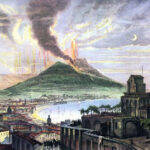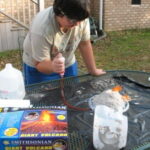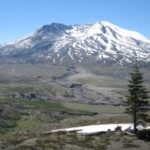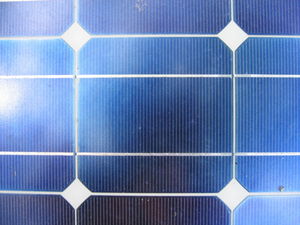It sits as a beacon of the Pacific Northwest, greeting you like a giant postcard as you drive through Tacoma on a clear day. Mt. Rainier possesses a tireless beauty that has attracted visitors from all over the globe. However, beneath its picturesque appearance lurks a sleeping giant. Mt. Rainier is also the largest volcano in the Cascades, and geologists agree it is only a matter of time before Mt. Rainier unleashes some of its fury on the Puget Sound.
The results of a Mt. Rainier eruption could be more destructive than the 1980 eruption of Mt. St. Helens in size and magnitude, according to the United States Geological Survey. It is also located near major cities, which makes it a much bigger threat than St. Helens. The typical geological results of an eruption such as floods, mudslides, landslides, lava flows and fallout would pose a dire threat to areas such as the Puyallup River Valley, Orting and surrounding towns.
According to University of Washington Tacoma Environmental Science Professor Peter Selkin, a Mt. Rainier eruption would begin with a series of Earthquakes. Currently, Rainier experiences about 30 minor quakes a year. The second phase of an eruption would involve the movement of magma (molten rock) inside the volcano. This would result in a swelling, or inflation, in the overall size of the mountain. The eruption could end at this point. If it escalates, magma would begin to flow to the ground level and geysers of hot steam would shoot out from the sides of the mountain. This alone could melt some of the nearly 4.8 million tons of snow and ice on the mountain and could cause an avalanche which could reek havoc on surrounding areas. “It would be like a giant flow of wet concrete,” said Selkin.
After the initial blast, a 5 to 10-foot high river of mud could reach the Puget Sound land area in as little as 30 minutes, according to the USGS. The mud flow would have the power to carry trees and houses with it,” said Selkin.
The Seattle/Tacoma area would probably be spared from the mudflow. Geological studies have shown that early lava flows have formed a 700 meter barrier of mountain rock that would act as a self containment wall. However, surrounding areas such as Orting and the Puyallup River Valley could get hit hard. Some of the mudflow would be contained by dams and reservoirs. However, a significant surge of debris could easily burst some of the dams and create a flooding hazard. According to Selkin, hydrologic dams in the area could also be damaged and cause widespread power outages.
An eruption could also create a massive cloud of volcanic ash and gases, with temperatures of approximately 1,500 degrees Fahrenheit. This could potentially reach Tacoma if the wind carried it in that direction. The results could be pollution, as well as destruction of homes and buildings caving in from the weight of accumulated volcanic ash.
So, how do we know when to run for the hills? No one seems to be able to offer an estimation of when. Geologists can only look at history and predict what could happen. However, the warning signs that would precede a lethal mudflow could give Puget Sound residents plenty of time to pack there bags and evacuate.
Some comfort can be taken in the fact that technology has advanced a lot in the years since the Mt. St. Helens eruption of 1980. Along with seismographs, which were used with Mt. St. Helens, Tilt Meters, which are about the size of a toaster, are being used by scientists to monitor shifts in the volcano’s crust.
Earthquakes at Mount Rainier and other Cascade volcanoes are monitored by the University of Washington and the USGS, and the volcanoes’ shapes are measured regularly by the staff of the USGS’s Cascades Volcano Observatory, located in Vancouver, Washington.
For more geological information on Mt. Rainier and other active volcanoes, please visit the website for the USGS website at http://www.usgs.gov/.







